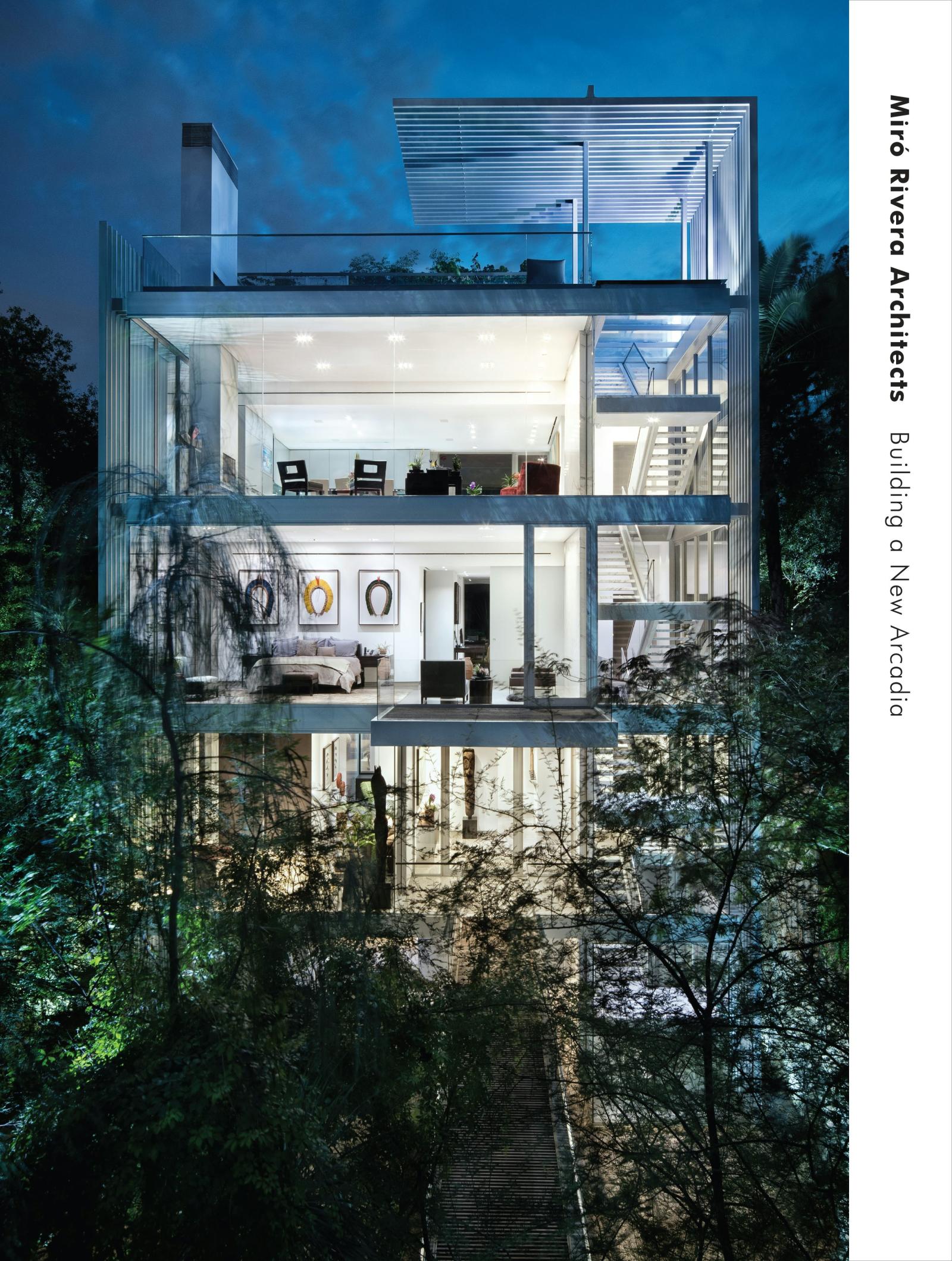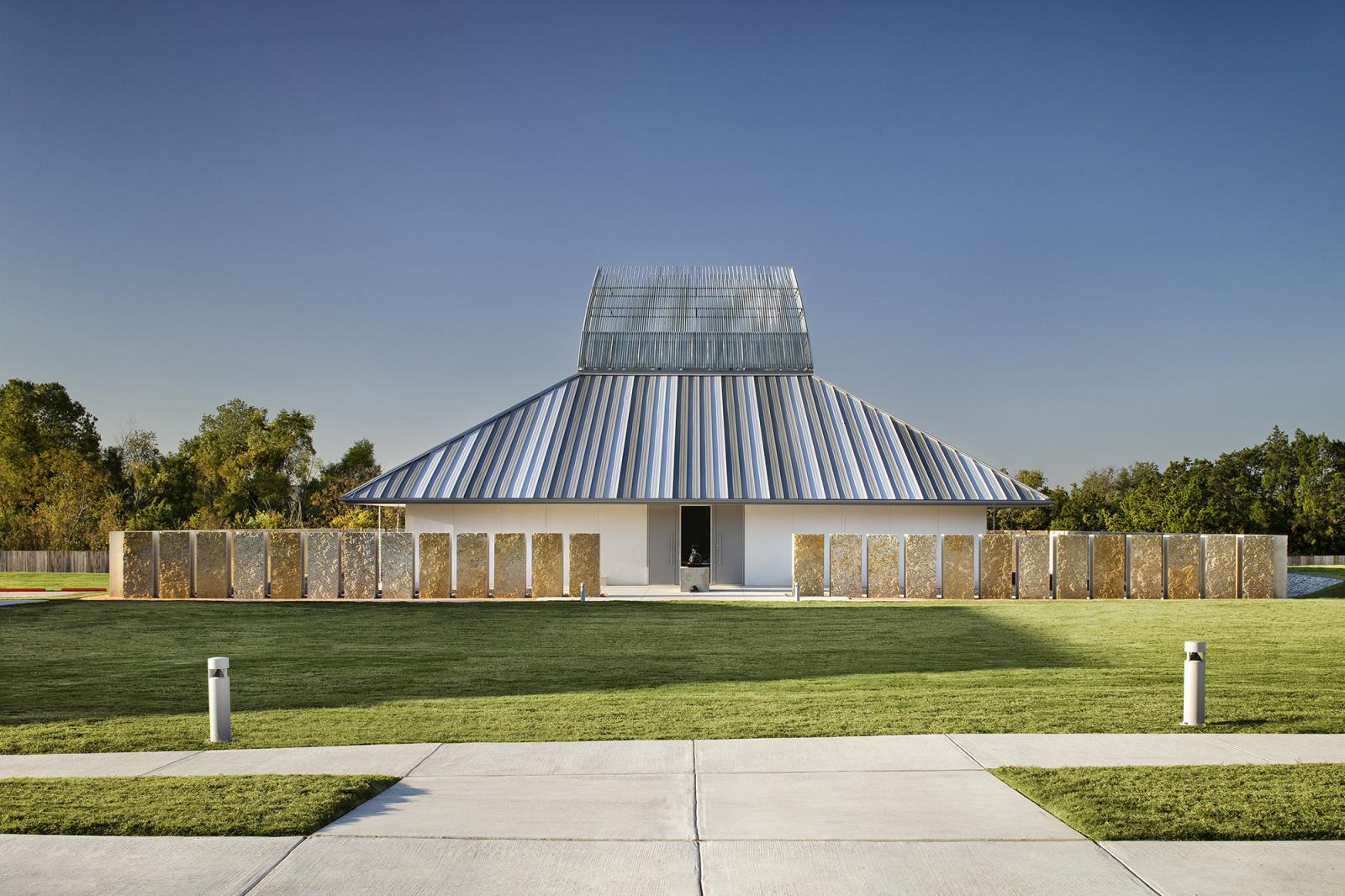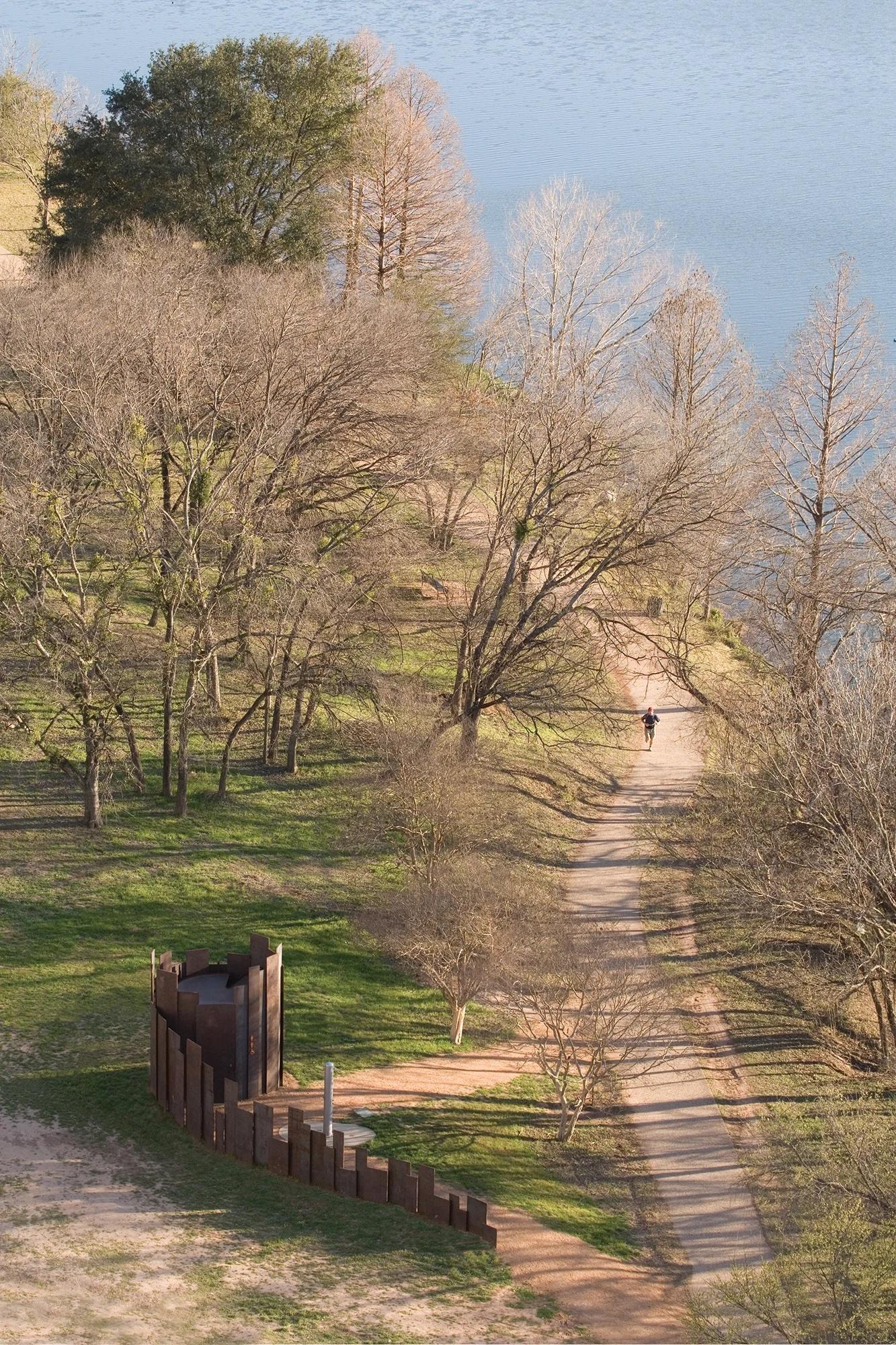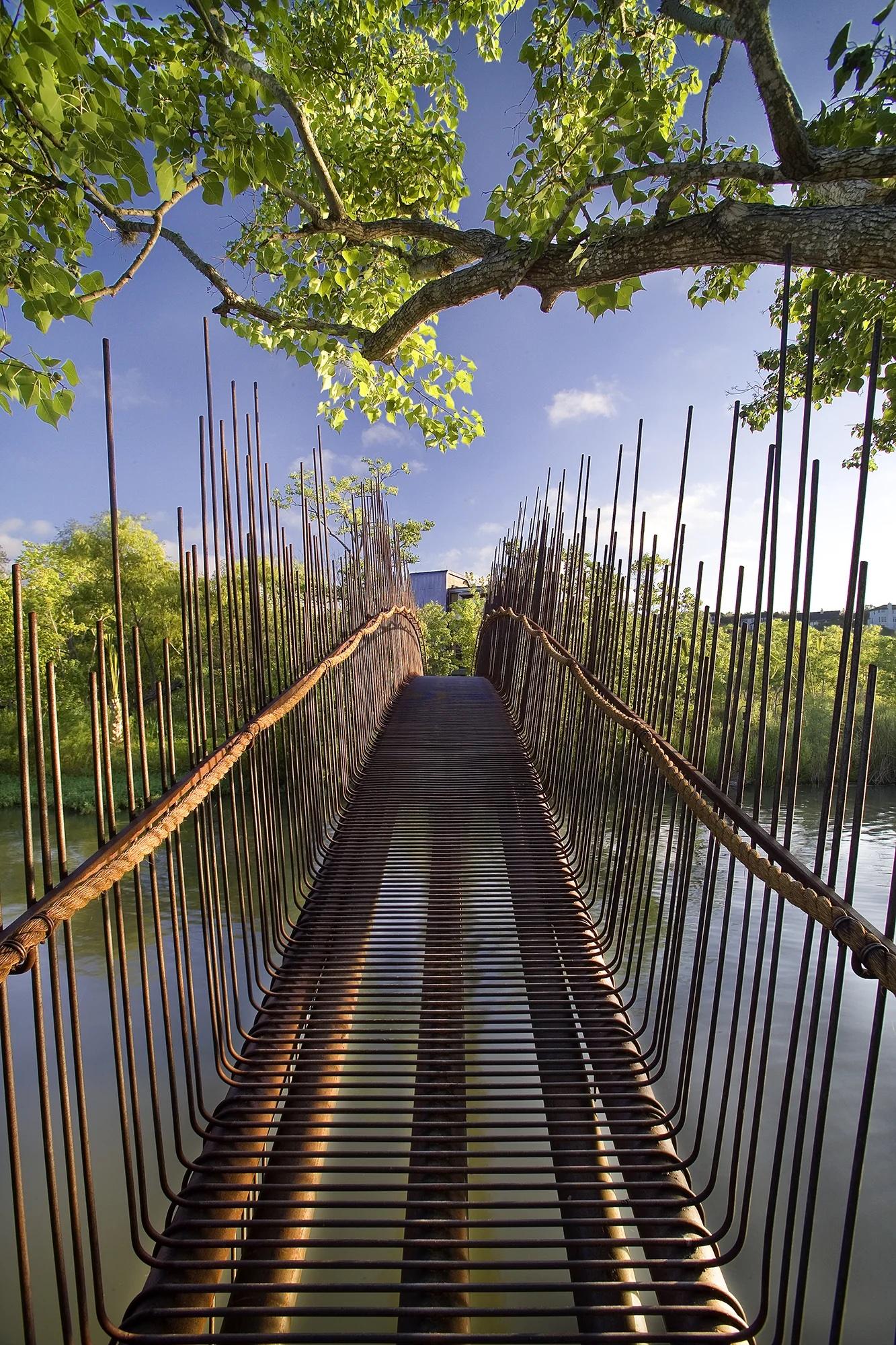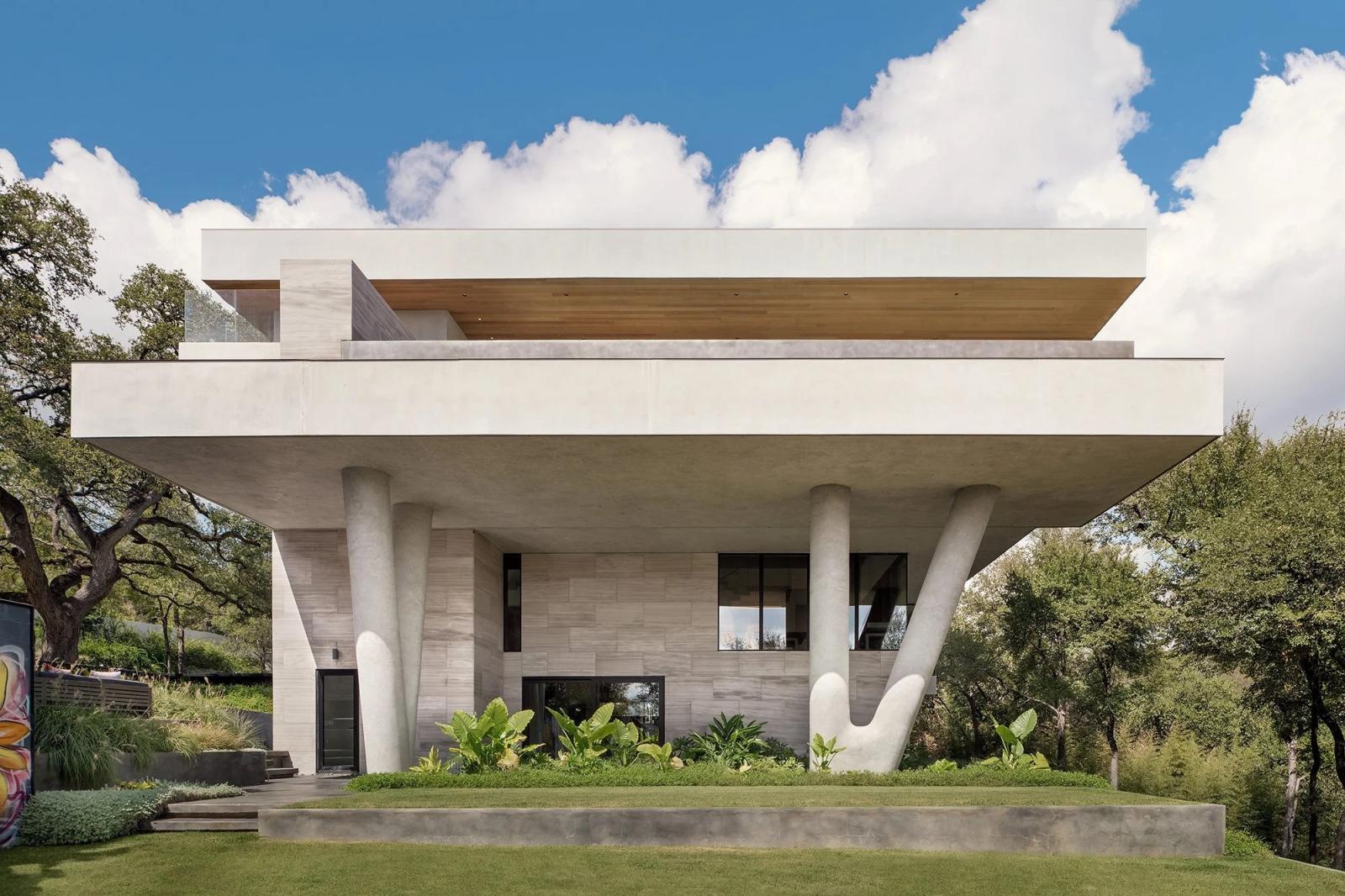Faculty Studio Spotlight: Miró Rivera Architects

Miró Rivera Architects’ approach is rooted in dutiful optimism, built on “the belief that architecture should engage in a positive dialogue with the community, both responding to and re-imagining its context.” The very structure of their studio is intimate and familial, led by Principals Juan Miró, Miguel Rivera, and Ken Jones, with Rosa Rivera, Miguel’s sister and Juan’s wife, serving as President.
In all scales and typologies, the work of Miró Rivera Architects addresses community, program, and site with care. With three principals as LEED Accredited Professionals, the studio strives for environmental soundness in all of their built work with a proven track record of top sustainability ratings from Austin Energy Green Building and the United States Green Building Council. Natural light and regional material palettes add to their architectural-ecological harmonies, and their work often embraces a continuous interior and exterior experience with special attention to material craftsmanship. Their forms and geometries are iconic without ostentatiousness, relying instead on dynamic connections to the site. Notable projects include the Central Texas Chinmaya Mission, the East Austin LifeWorks branch, the Trail Restroom at the hike and bike trail, the Formula 1 Observation Tower and COTA Amphitheater, the mixed-use project Citica in Monterrey, Mexico, the Vertical House in Dallas, among many others. Their expansion of the Emma S. Barrientos Mexican American Cultural Center in Austin designed in collaboration with Tatiana Bilbao Estudio will be opening this fall.
The studio released its first monograph Miró Rivera Architects: Building a New Arcadia in 2020. Spanning two decades of work, the volume presents a lush exploration into the studio’s creative process. With 95 drawings and 231 photographs, including commissioned images by renowned photographer Iwan Baan and beautiful pinhole camera project documentation from Sebastian Schutyser, the monograph offers thoughtful imagery alongside texts from some of the most respected thinkers in design, including Michael Sorkin, Nina Rappaport, Juan Luis de las Rivas Sanz, Carlos Jiménez, and others.
“The work of Miró Rivera Architects is thoughtful. It has depth. It’s not angry. It’s not arbitrary. It plays no games. It’s rarely gestural and, when it is, the gesture is both concise and memorable. The tower at Austin’s Formula One track, the branch-festooned footbridge, and the rotated diamond barn are all examples of the architects’ capacity for rationally exuberant invention.”
— From “Monks and Cowboys”, Michael Sorkin’s forward in Miró Rivera's Monograph Building a New Arcadia
Austin, in particular, is fertile ground for inspired design work, which Miró explores in his essay “The Landscape City” within the monograph. He finds the character and natural environment of Central Texas to be particularly moving, emphasizing that our particularly high quality of living is born from an essential integration of urban fabric with landscape.
"To design in a landscape city like Austin is to become familiar with heritage trees, critical root zones, rim rocks, floodplains, invasive algae, zebra mussels, sediment ponds, the nesting season of warblers, etc. It is the joy and the challenge of designing in, and with, nature." – From the essay "The Landscape City" by Juan Miró
With work spanning more than 20 years, the studio has won 100 design awards, including over 40 local, state and national awards from the American Institute of Architects. In 2016, Miró Rivera Architects received the Texas Society of Architects’ Architecture Firm Award, the highest honor bestowed upon architectural design studios in Texas, and in 2023, the studio was the recipient of the Texas Medal of the Arts Award for Architecture. This year, Architizer ranked them #28 on their list of the 100 Best Architecture and Design Firms in the United States.
Outside his practice, Juan Miró has been a faculty member at The University of Texas at Austin School of Architecture since 1997 and he has directed the school’s Studio Mexico sequence since 1998. Named a Distinguished Professor by the Association of Collegiate Schools of Architecture and a member of UT’s Academy of Distinguished Teachers, Miro is a beloved teacher and colleague who has influenced generations of students. He has received both the Texas Society of Architects’ Award for Outstanding Educational Contributions, the University of Texas Regents’ Outstanding Teaching Award, and currently serves as the Dick Clark III Endowed Chair in Architecture at UTSOA.
We sat down with Juan Miró to gain insight into studio life at Miró Rivera Architects:
Describe your practice in two sentences.
In all our projects, we try to address the Vitruvian triad (utilitas, firmitas and venustas), which we believe still represents the three areas of responsibility of architects. For us, the architect must operate as a thinker-builder-artist at the same time. Accordingly, our projects respond to the specific needs of our clients; they are well-conceived and carefully detailed, and we hope they bring beauty and delight into the world.
Which project defines your practice’s ethos?
This is always a hard question to answer with so many options, but I would probably say the pedestrian bridge in Lake Austin. It successfully fulfills the three goals I just described while integrating itself in its beautiful natural context. This bridge also expresses our interest in structures and innovative use of materials.
How does teaching inform your work and vice versa?
Teaching is very demanding, but it is also enriching. When in an academic environment, one is constantly learning from students and from colleagues. It is also important to note that we learn about ourselves when teaching, especially as I reflect about my own work in order to explain it and share my experiences in ways that can help others.
What words of wisdom do you have for the students entering the field?
Be tolerant, be open minded, be curious…also be patient, and be engaged. Work hard and the opportunities will come.
Any in-progress work that you’d like to share?
We are about to inaugurate the addition and renovation of the Mexican American Cultural Center right on Town Lake. It has been a long arduous process, as public buildings tend to be. We have enjoyed collaborating with Tatiana Bilbao and we are very proud to have created and wonderful new public space, not just for the Hispanic community, but for the whole city.
Which place(s) in Austin hold the most meaning for you?
Easy: Barton Springs Pool, for me, is the soul of Austin. The place represents the essence of Austin as a Landscape City, a city that has worked hard to integrate nature in the city. The best three things in Austin come together at Barton Springs Pool: trees, water, and people. Every time I swim there, I thank all the people that fought to preserve the pool, starting 100 years ago.
What have you been reading lately?
I normally read three or four books at the time…I probably have 10 or 12 piled up in my nightstand! Sometimes I read them over long periods of time. One that I have been reading for a while is the monumental biography Frederick Douglass: Prophet of Freedom by David Blight. Another one I started recently is City in a Garden: Environmental Transformation and Racial Justice in 20th century Austin, Texas by Andrew M. Busch. I am also finishing another one in Spanish about modern Mexican architecture written by a professor from the UNAM in Mexico City. I love fiction but I only read novels in the summers or Christmas breaks. I also read several newspapers everyday: The New York Times, El Pais (from Spain) and the Austin-American Statesman.
What music is on in your studio?
It varies a lot based on whose playlist is playing. I have no control, everybody else in studio decides. I have enjoyed lately the playlist from one of our young architects who loves music from the 70s and 80s from Spain. It caught me completely by surprise.
Images courtesy of Miró Rivera Architects
